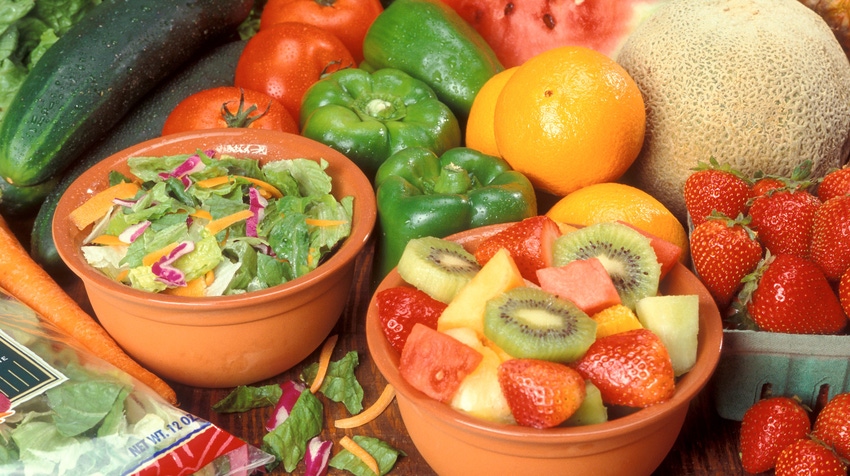
It’s approaching that time again, the annual season of giving and bringing joy to others.
Hard to do if you’re hungry and not only don’t have anything to put under a non-existent Christmas tree, but also don’t have anything to set on the table in the way of caloric intake.
There are some folks whose reason for the season is to minimize or eliminate that kind of scenario by taking advantage of the largesse that flows across the Mexico-U.S. border at Nogales, Ariz. An estimated $2.2 billion worth of vegetables and another $1.2 billion worth of fruit crossed into the United States through Nogales last year representing just shy of 20% of the value of all Mexican produce imported into the U.S.
More than 1,000 commercial trucks cross the international border daily (a record 1,900 did so in January 2021); a good percentage of the 18-wheelers are each carrying some 20 tons of cargo, much of it edible product designed for domestic markets. It’s freshly picked, looks good, smells good, tastes good.
Until it doesn’t and it begins its trek to the landfill. It’s still good, mind you, healthy and nutritious. It just doesn’t look A-1 anymore. That’s when the Good Samaritans step in, like Borderlands Produce Rescue that repurposes 32 million pounds of produce annually.
Their Veggies R Us program makes edibles available through POW WOW (Produce on Wheels With-Out Waste) where members of the community support the non-profit by paying a minimal amount to take home up to 70 pounds of produce.
Even leftovers are well treated. During the last produce season, 90% of the rescued produce that was deemed no longer usable was sent to local ranchers and composting programs to recycle.
Add to those efforts a newly expanded Arizona Food Bank Network program called No Borders, No Limits or Sin Fronteras, Sin Limites, that embodies cross-border collaborative work between the produce rescue team, food banks on both sides of the border, and produce donors who share a passion for hunger relief.
Salvaging excess food
The recent expansion of these efforts at salvaging excess food represents the first time in Arizona’s Food Bank Network, through an agreement with food banks across the state, where a role is played in international produce activities.
As a result, member food banks will now work with growers, manufacturers, brokers, stores, and restaurants to get perfectly good food --- most of which would be otherwise wasted --- into food bank warehouses and to agencies that feed people who don’t know where their next meal is coming from.
Situated at the Nogales Port of Entry, one of the largest produce superhighways of Mexican-grown produce in the world with over 6 billion pounds of produce passing through annually, the rescue team is now focusing on the portion that doesn’t get sold, redirecting it to families and food banks in need of hunger relief.
An estimated 1% to 2% of the fresh produce crossing the Nogales border does not get sold, but ends up as animal feed or in already-crowded landfills. By one estimate, upwards of 60 million pounds of imported product gets dumped at the U.S.-Mexico border annually.
According to AzFBN news reports, teams in Phoenix and Nogales rescued food loads totaling millions of pounds last year. Winter months are most active, according to the USDA, with Mexican-grown products from Sinaloa, Sonora, and Baja representing three quarters of the United States fresh produce consumption --- and that was before the program expansion.
Efrain Trigueras is Director of Produce Operations where he has spent the last seven years rescuing food. “Last year alone, before we expanded our efforts, we managed to cave close to 40 million pounds rescued in Nogales and shared across the state of Arizona. And now we’re sharing with food banks in other states via the Feed America Network, sending Mexican produce to food banks in thirty states like Florida and New York. It’s truly No Borders, not just the border of Mexico and the U.S., but state boundaries as well.”
Variety of produce
Tomatoes, bell peppers, cucumbers, corn, watermelons, grapes, lemons --- a variety of product grown and harvested in Sonora and Sinoloa makes its way north to the port of entry. “We deal with the unexpected and our warehouse changes color every day from that of ripe red tomatoes one day to the dark green of pallet loads of watermelons the next with the flow changing based on donations and how farmers react to changes in the weather.”
He smiles remembering what he considers his best day at work. “It was a full truckload of honey pineapples from Vera Cruz. It was awesome because we were able to rescue and redirect this entire shipment.
“If we weren’t here, much of that produce would go directly to a landfill and because of our Re-pack program, we can rescue more than we previously did,” says Trigueras. “Now we can bring product to our warehouse, pre-sort it and re-pack it into mixed fruit and produce boxes. We have a daily call to a coalition of regional food banks about what is available and we find a daily destination. Because product has a time-sensitive need, if everyone involved with Arizona food banks has enough of that particular supply, we’ll go outside the state.”
About the Author(s)
You May Also Like




